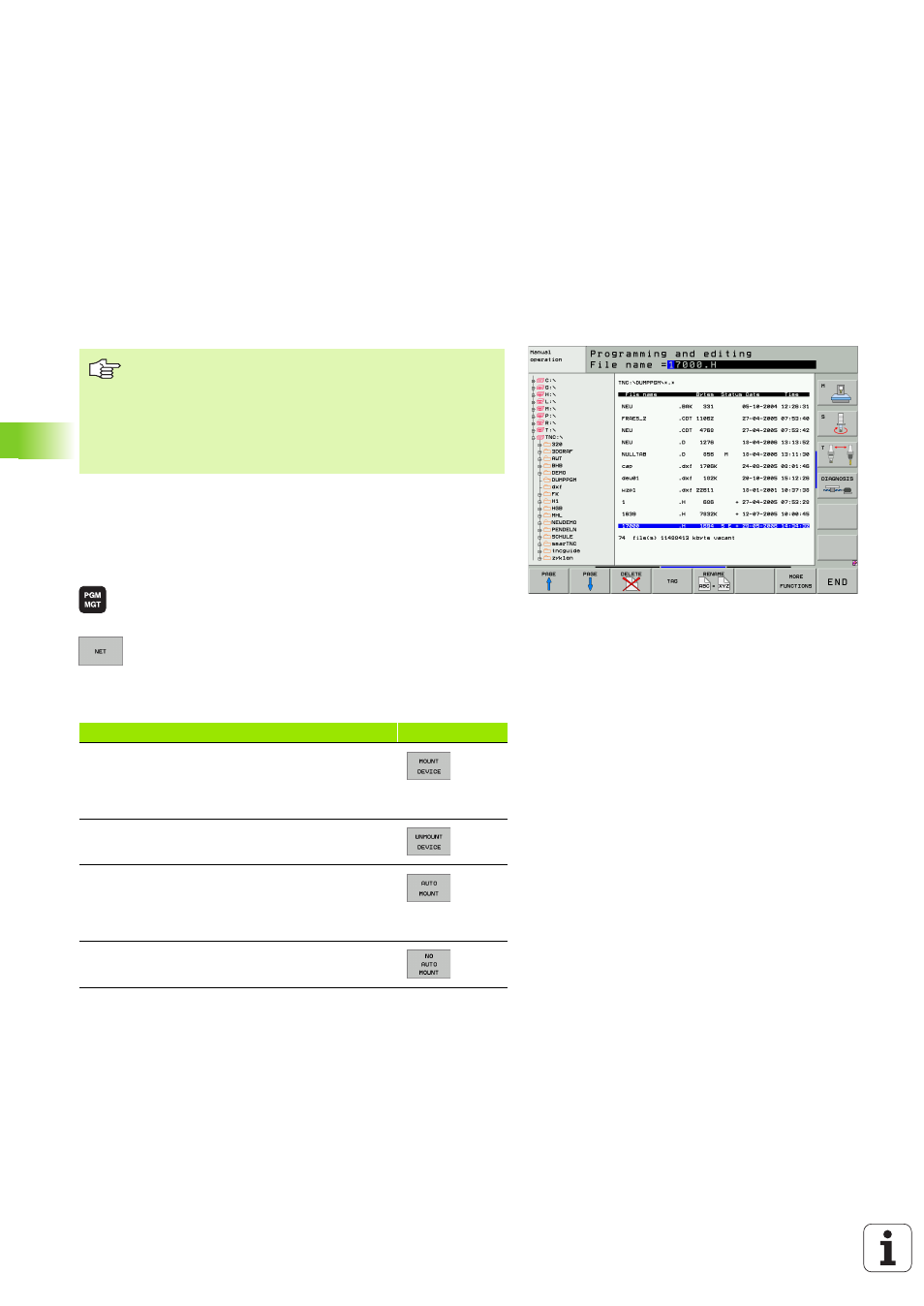The tnc in a network, 3 w o rking with the file manag er – HEIDENHAIN iTNC 530 (340 49x-03) ISO programming User Manual
Page 126

126
4 Fundamentals of NC, File Management, Programming Aids, Pallet Management
4.3 W
o
rking with the File Manag
er
The TNC in a network
If the TNC is connected to a network, the directory window displays
up to 7 drives (see figure). All the functions described above (selecting
a drive, copying files, etc.) also apply to network drives, provided that
you have been given the corresponding rights.
Connecting and disconnecting a network drive
8
To select the program management: Press the PGM
MGT key. If necessary, press the WINDOW soft key
to set up the screen as it is shown at the upper right.
8
To manage the network drives: Press the NETWORK
soft key (second soft-key row). In the right-hand
window the TNC shows the network drives available
for access. With the soft keys described below you
can define the connection for each drive.
It may take some time to mount a network device. At the upper right
of the screen the TNC displays [READ DIR]. The maximum
transmission speed is 2 to 5 MB/s, depending on the type of file being
transferred and how busy the network is.
To connect the Ethernet card to your network, see
“Ethernet Interface,” page 603.
To connect the iTNC with Windows 2000 to your network,
see “Network Settings,” page 661.
The TNC logs error messages during network operation
(see “Ethernet Interface” on page 603).
Function
Soft key
Establish network connection. If the connection
is active, the TNC shows an M in the Mnt column.
You can connect up to 7 additional drives with
the TNC.
Delete network connection.
Automatically establish network connection
whenever the TNC is switched on. The TNC
shows an A in the Auto column if the connection
is established automatically.
Do not establish network connection
automatically when the TNC is switched on.
